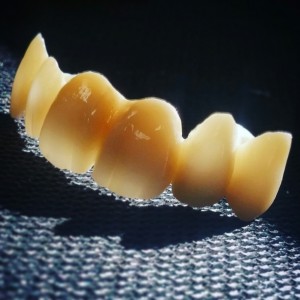Titanium and the Marvel of Osseointegration
In the last few decades, the dental industry has come to respect the power and utility of titanium restorations. Computer aided design and milling have made titanium restorations more available and reliable than ever. Titanium has many obvious advantages as a restoration material – high strength, low cost, and lightweight, which causes less stress on the mouth. There is, however, one more factor that makes titanium a great material for dentistry – osseointegration.
Osseointegration is a property unique to titanium. It promotes rapid healing and fusing of restoration to bone, making titanium ideal for implants. This property was first discovered by biologist Per-Ingvar Brånemark in 1952. He had put an implant into a rabbit’s jaw bone to study the flow of blood, but was unable to remove the implant when the experiment had finished: the implant had healed into the jawbone at an accelerated rate.
Titanium implants didn’t see wide acceptance in the medical field until the 1980s. Even then, titanium was not an option for many labs, as titanium casting must take place in a vacuum. In recent years, Computer Aided Design and Computer Aided Milling (CAD/CAM) have made titanium restorations much more accessible to both labs and doctors. CAD/CAM systems such as NobelBiocare and 3Shape allow us to plan complex implant cases – including bar-overdentures – and to ensure these restorations have proper aesthetics, function, and porcelain support. Steve’s Lab’s surgical implant guides can further ensure the success of challenging implant cases.




Leave a Reply
You must be logged in to post a comment.